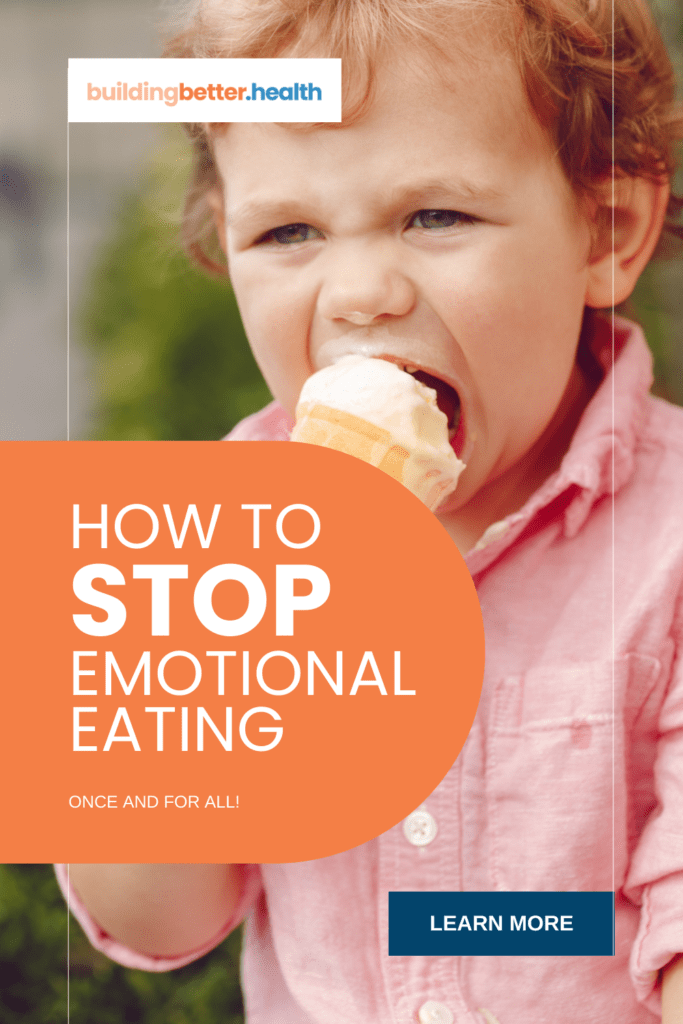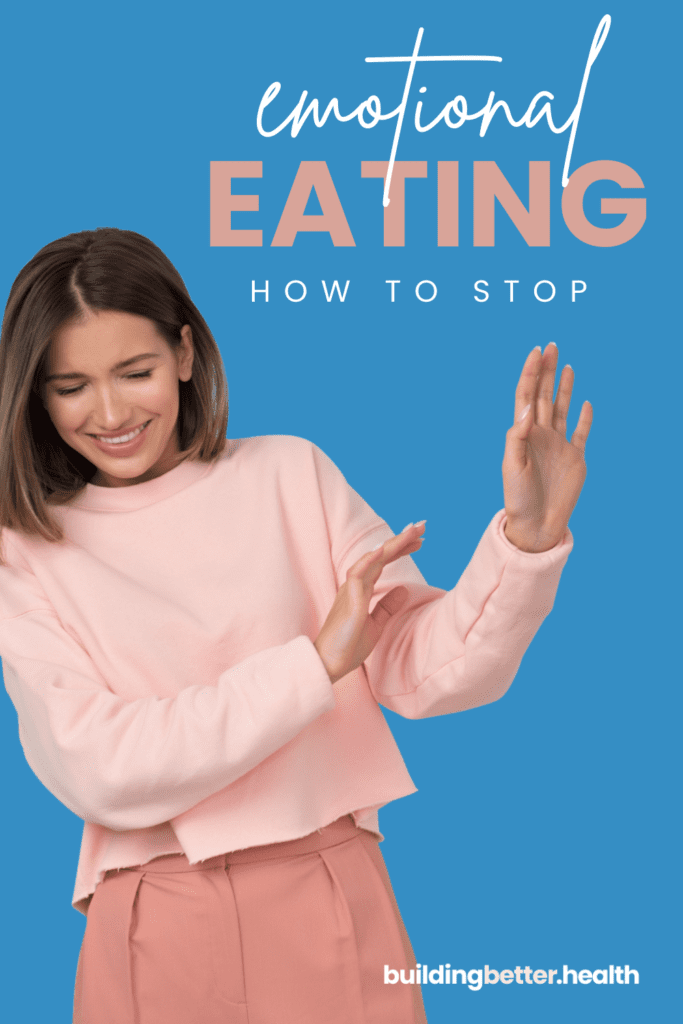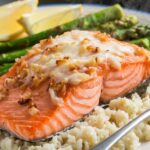
Please note: This website contains affiliate links. As an Amazon Associate, we earn from qualifying purchases at no additional cost to you.
Ready to stop emotional eating?
Imagine a life where happiness isn’t tied to food. So many of us overeat when we are happy, sad, stressed, angry, tired or bored. If you know you’re an emotional eater, please don’t be too hard on yourself. A study recently reported that at least 40% of adults eat emotionally.
Overeating can lead to so many weight and health issues, but if you take one tiny step forward TODAY and read this article, you can start to develop some new coping strategies and stop emotional eating once and for all.
We’ll cover:
- Understanding Emotional Triggers
- Reducing Emotional Eating Episodes
- Finding Coping Strategies
- Selecting Healthy Snacking Alternatives
- Getting Social Support
- Developing New Habits
This website contains affiliate links. As an Amazon Associate, we earn from qualifying purchases.

Understanding Emotional Eating Triggers
Emotional eating can lead to weight gain or binge eating, harming our well-being. It’s key to know and understand what triggers emotional eating. This behavior often comes from psychological factors, making us turn to food when stressed or anxious.
Identifying Emotional Triggers
Stress, loneliness, sadness, anxiety, or boredom are common triggers. Children may also learn to use food as comfort or reward. Knowing these triggers is the first step to managing emotional eating. Ask yourself:
- Do you eat at odd times or more than usual?
- Do you eat more during or after stressful times?
- How do your family’s food habits affect your eating?
By managing these triggers, you can control your eating and avoid guilt and more emotional eating.
Common Situations and Emotions Linked to Emotional Eating
Emotional hunger can feel sudden and lead to cravings, causing overeating and guilt. Here are some common scenarios and emotions:
- Chronic stress can make you crave high-sugar and high-fat foods.
- Feeling lonely or empty can make you eat to feel better.
- Social situations can lead to overeating, mirroring family and friends’ habits.
- Childhood habits, like treats for good behavior, can affect adult eating.
Emotional eating seeks instant relief and can lead to a cycle of cravings, eating, guilt, and shame.
Keeping a mood and food journal can help track your habits and emotions. It reveals patterns and helps manage triggers. Getting help from counselors, nutritionists, or fitness experts can also aid in overcoming emotional eating.
How to Stop Emotional Eating
Stopping emotional eating is more than just having willpower. It’s about understanding the difference between hunger and cravings. Keeping a food diary and finding new ways to cope are key steps.
Recognizing Emotional Hunger vs. Physical Hunger
It’s important to know the difference between emotional and physical hunger. Emotional hunger is sudden and urgent, while physical hunger grows over time. It can make you crave certain foods, unlike physical hunger which is satisfied by many foods.
Keeping a Food Diary
Keeping a food diary is a helpful strategy. It helps you see patterns between your mood and what you eat. By writing down your meals and emotions, you can learn what triggers your emotional eating. For more tips, check out Mayo Clinic.

Implementing Alternative Coping Mechanisms
Replacing emotional eating with healthier habits can greatly improve your life. Here are some strategies:
- Stress management techniques: Try breathing exercises, yoga, or meditation to manage stress.
- Socializing: Connect with friends or join groups to fight loneliness.
- Engaging in hobbies: Find activities you love to do, which can distract you from emotional eating.
- Professional help: If you can’t manage on your own, a therapist can offer valuable guidance.
It’s crucial to recognize emotional eating without judging yourself. Using a food diary and finding new ways to cope can lead to lasting change.
| Emotional Eating Triggers | Alternative Strategies |
|---|---|
| Stress | Mindfulness, exercise |
| Loneliness | Socializing, support groups |
| Boredom | Engaging in hobbies |
By using these strategies, you can manage emotional eating and live a healthier life.
Coping Strategies to Manage / Stop Emotional Eating
Finding ways to handle emotional eating is key to a healthy life. Doing physical activities and practicing mindfulness can help. We know it’s easier said than done, but these methods can reduce the urge to eat when you’re not hungry.
Physical Activities and Exercise
Yoga, walking, and other exercises are great options to help stop emotional eating. They boost your mood and health. Plus, they make you feel good, unlike eating when stressed.
Choosing fun activities helps you stick with it. This way, exercise becomes a positive thing for you.
Mindfulness and Meditation Techniques
Mindfulness and meditation are also powerful tools. They help you deal with stress and emotional eating. By staying in the moment, you can handle your feelings better.
Using your senses, like smelling or listening, can also help. Activities like nature walks or listening to music can distract you from cravings. These tips help you create a mindful space to support your efforts.
Many people with obesity struggle with emotional eating. It’s often linked to stress or self-dislike, leading to unhealthy foods. Knowing your eating habits and what triggers overeating is important. Combining mindfulness with physical activities is a strong way to manage emotional eating.
Healthy Snacking Alternatives
Changing your snacking habits is key to beating emotional eating. Choose foods that are good for you to manage cravings and live healthier.
Choosing Nutritious Snacks
Look for snacks that are both tasty and healthy. The Mayo Clinic suggests fresh fruit, veggies with low-fat dip, nuts, or unbuttered popcorn. These snacks give you important nutrients and help fight emotional eating.
Finding High Protein Foods You Love
Foods that are high in protein will make you feel more satiated (full) so you won’t want to keep snacking and those horrible cravings will stop. A few favorite protein snacks we recommend include:
- Cottage cheese
- Fish (even canned tuna fish or salmon)
- Chomps Jerky Sticks
- Eggs
- Smoothies with protein powder
- Nuts (almonds and walnuts are great options)
- Popcorn (this organic popcorn is one of our faves)
- Greek yogurt
- Mozzarella cheese sticks
Staying Hydrated
Drinking enough water is important to tell hunger from thirst. Sometimes, we think we’re hungry when we’re really thirsty. Drinking water helps cut down on snacking and boosts health.
Staying hydrated is a simple yet powerful way to control emotional eating. Keep a water bottle with you throughout the day so you can get at least 60 to 100 ounces in each day.
The Role of Social Support
Understanding the importance of social support for emotional eating is key. Friends and family can help you feel better without food. Emotional eating support groups also offer a sense of community and shared experience.

Leaning on Friends and Family
Your closest network is vital in fighting emotional eating. They can listen, encourage, and distract you from food. Sharing your feelings with them can help you feel less alone and less likely to eat for comfort.
Joining Support Groups
Support groups for emotional eating are very helpful. They offer a safe place to share and learn from others. The Mayo Clinic says these groups can make you feel less lonely and isolated.
Dr. King notes that they help you feel part of a community. This can lead to healing. By connecting with others, you can find new ways to cope and get support.
“Individuals of normal weight who engage in emotional eating consume less food in response to negative emotions compared to individuals with overweight or obesity. Regular physical activity has been shown to protect against weight gain and reduce negative affect that can lead to emotional eating.”
| Benefits of Social Support | Impact |
|---|---|
| Emotional Outlet | Reduces dependency on food for comfort |
| Sense of Community | Decreases feelings of loneliness |
| Shared Experiences | Offers new coping strategies |
| Encouragement | Boosts confidence and self-esteem |
Using social support, whether from friends, family, or groups, can help you fight emotional eating. It builds a strong foundation to overcome these tendencies.
Developing Mindful Eating Habits
Starting mindful eating habits can help break the cycle of emotional eating. It makes you more aware of your food and body feelings. This leads to a better eating relationship.
Listening to Your Body
First, learn to listen to your body’s hunger and fullness signals. Eat based on physical hunger, not emotions. This helps you eat healthier.
A 2015 study found that mindful eating improves eating habits. It slows down eating and helps recognize when you’re full. It also reduces binge and emotional eating.
Practicing Mindful Eating Techniques
Using mindful eating techniques can make eating more enjoyable. These include:
- Slowing down the eating process
- Savoring each bite
- Putting down utensils between mouthfuls
- Avoiding distractions like screens while eating
These practices help you appreciate your food more. They also strengthen your body’s signals. Mindful eating is about enjoying your food and listening to your body.
| Study | Results |
|---|---|
| 2015 Study | Improved eating behaviors and reduced binge eating and emotional eating |
| Randomized controlled trial with 194 adults | Decreased sweets intake and maintained fasting blood glucose |
| Small controlled trial with 50 adults | Improvements in depression, nutrition self-efficacy, and controlling overeating behaviors |
Addressing Stress and Anxiety
Understanding how stress and emotions affect your eating is crucial. Emotional eating can be caused by feelings like anger, sadness, and stress.
While quick-grab processed foods might seem appealing when you’re feeling emotional, they can raise cortisol levels, making stress worse.
Instead, choose foods that help you relax and feel emotionally balanced. Green tea, matcha, and white tea have L-theanine, which lowers stress. Dark cherries can give you a sweet treat and help with sleep. Omega-3 foods like salmon also improve sleep.
| Foods | Benefits |
|---|---|
| Green Tea | Contains L-theanine for stress reduction |
| Dark Cherries | Increase melatonin for better sleep |
| Salmon | Rich in omega-3 fatty acids for sleep quality |
While you would probably prefer high-fat and/or sugary foods when you’re stressed, there are a few delicious options that you can try. Foods like dark chocolate, fruits, nuts, legumes and whole grains help manage these cravings.
Long-term Strategies for Breaking the Cycle
Overcoming emotional eating is tough, but with the right strategies, you can change for good. It’s key to set goals that improve your overall health, not just your weight. Focus on managing stress, staying active, and eating well.
Setting realistic goals is vital for lasting success. Learn new ways to cope that don’t involve food. Find hobbies and routines that bring you joy. Also, celebrate your progress towards a healthier lifestyle.
Plan for stressful times by having healthy snacks and meals ready. Eating balanced meals regularly helps control hunger. This makes it easier to handle emotions without turning to food.
Use friends and family for support during tough times. A strong support system is crucial for a healthier lifestyle. Practice self-compassion to meet negative emotions with care and curiosity.
Make meal prep easier by using the same ingredients and shortcuts like frozen fruits and veggies. This saves time and ensures you have healthy meals. Experts say 75% of overeating is due to emotional triggers. Tackling these can help you stick to your strategies and reach your goals.
Conclusion
Overcoming emotional eating is a journey. It involves finding your triggers, using effective coping strategies, and adopting healthier habits. Remember, it’s okay to slip sometimes. These moments are chances to learn and grow.
Remember that change doesn’t happen overnight. Taking small steps every day will help you reduce and ultimately stop emotional eating. We know you can do it!

Please note: This website contains affiliate links. As an Amazon Associate, we earn from qualifying purchases at no additional cost to you!
Please note: This website contains affiliate links. As an Amazon Associate, we earn from qualifying purchases at no additional cost to you.












